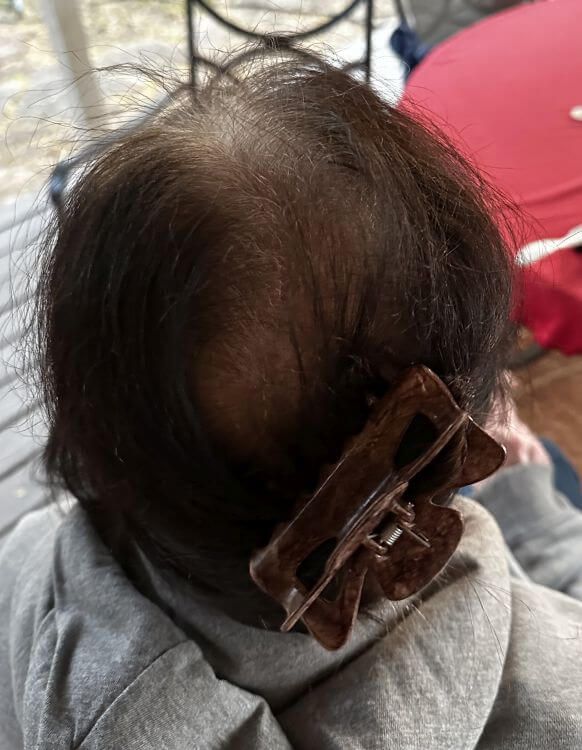- 0
Introduction:
Chemotherapy, a cornerstone in cancer treatment, involves the use of potent drugs to target and eliminate rapidly dividing cancer cells. A notorious side effect of this aggressive treatment is alopecia, or hair loss. Many cancer patients grappling with the psychological impact of losing their hair may consider using chemical hair dyes as a means of regaining a sense of normalcy. However, a closer examination reveals that the use of chemical hair dyes during chemotherapy can introduce a myriad of risks and complications, ranging from skin sensitivity and allergic reactions to potential interactions with chemotherapy drugs. This discussion aims to provide a nuanced understanding of why cancer patients must abstain from using chemical hair dyes during their treatment, emphasizing the intricate physiological and immunological considerations that underscore this recommendation.
Brief Overview Of Hair Loss and Chemical Hair Dye

Chemotherapy-Induced Hair Loss:
Chemotherapy targets rapidly dividing cells, a characteristic shared by both cancerous and healthy cells, including those in hair follicles. As a result, patients undergoing chemotherapy often experience significant hair loss, impacting their physical appearance and, subsequently, their emotional well-being. While this side effect is generally reversible once treatment concludes, the desire to manage the aesthetic consequences may lead some patients to consider chemical hair dyes.
Composition of Chemical Hair Dyes
To understand the potential risks associated with chemical hair dyes, it is imperative to examine their composition. These dyes typically contain ammonia, peroxide, and paraphenylenediamine (PPD), among other synthetic chemicals. Ammonia opens the hair cuticle, peroxide lightens the natural color, and PPD, responsible for color fixation, can lead to allergic reactions. These aggressive compounds can raise concerns when applied to a scalp already sensitized by chemotherapy.
Skin Sensitivity and Allergic Reactions
Cancer patients undergoing chemotherapy often experience heightened skin sensitivity, a consequence of the drugs affecting rapidly dividing cells. The chemicals in hair dyes can exacerbate this sensitivity, leading to allergic reactions such as itching, redness, or more severe dermatological issues. The compromised skin barrier due to chemotherapy makes patients more susceptible to adverse reactions, underscoring the importance of avoiding potentially irritating substances.
Chemical Absorption and Systemic Effects
The scalp is a highly vascularized area, allowing substances applied to the skin to be absorbed into the bloodstream. Chemicals from hair dyes can penetrate the skin and enter the systemic circulation, potentially interacting with chemotherapy drugs. These interactions may have unpredictable consequences, potentially compromising the efficacy of chemotherapy or contributing to additional health issues. The systemic effects of chemical absorption necessitate caution and a conservative approach in the use of such products during cancer treatment.
Impact on the Immune System
Chemotherapy-induced immunosuppression is a well-documented concern, leaving patients vulnerable to infections and other complications. The introduction of chemical hair dyes poses an additional risk by potentially overwhelming the weakened immune system. Allergic reactions or infections resulting from the use of these dyes can further compromise the body’s ability to fight off diseases, creating a dangerous scenario that may hinder the patient’s recovery.
Psychological Implications and Coping Mechanisms
The psychological toll of cancer treatment, exacerbated by the physical changes like hair loss, is profound. While the desire to maintain a positive self-image is understandable, it is crucial to address the psychological implications of hair loss during chemotherapy. Encouraging patients to explore alternative coping mechanisms, such as embracing their natural appearance or experimenting with non-chemical solutions like henna or vegetable-based dyes, can provide a safer and more supportive approach to maintaining self-esteem.
Educational Initiatives for Patients
The responsibility of educating cancer patients about the potential risks associated with chemical hair dyes during chemotherapy falls on healthcare providers. Establishing clear communication channels and providing educational resources can empower patients to make informed decisions about their personal care routines. This proactive approach fosters a sense of control and autonomy, allowing patients to actively participate in their treatment plan.
Promotion of Safer Alternatives
Exploring natural and non-chemical alternatives to conventional hair dyes is essential for cancer patients. Natural hair dye like EarthDye , derived from the Indigo plant, is a popular alternative known for its natural coloring properties. Unlike chemical dyes, EarthDye does not contain harsh additives and poses a lower risk of adverse reactions. Supporting and promoting such alternatives can contribute to the overall well-being of individuals undergoing cancer treatment.
Research Gaps and Future Considerations
While the existing body of knowledge underscores the potential risks of chemical hair dyes during chemotherapy, there is still room for further research. Future studies could delve into the specific interactions between chemotherapy drugs and hair dye chemicals, elucidating the molecular mechanisms underlying adverse effects. Additionally, investigating the long-term consequences of chemical exposure during cancer treatment can inform more comprehensive guidelines for patient care.
Reasoning
In this reasoning, the decision to avoid chemical hair dyes during chemotherapy is grounded in a thorough understanding of the complex interplay between treatment-induced physiological changes and the potential risks associated with synthetic hair dye compounds. As cancer patients navigate the multifaceted challenges of their treatment, healthcare providers, support networks, and patients themselves play integral roles in ensuring informed decision-making. By prioritizing patient education, promoting safer alternatives, and addressing the psychological aspects of appearance changes, the healthcare community can contribute to a more comprehensive and patient-centered approach to cancer care.
